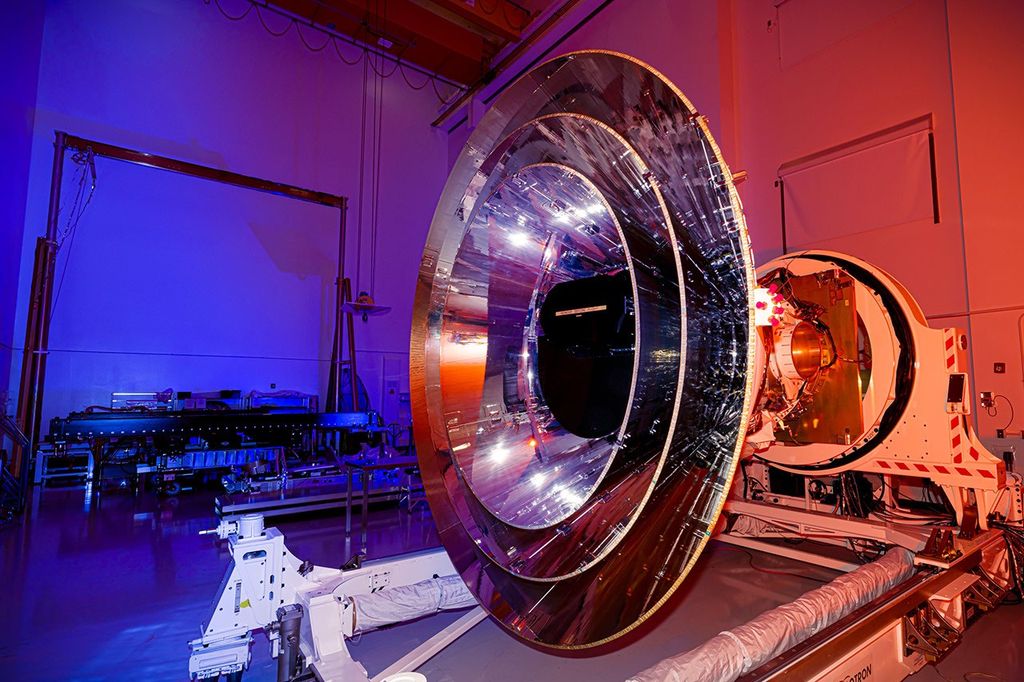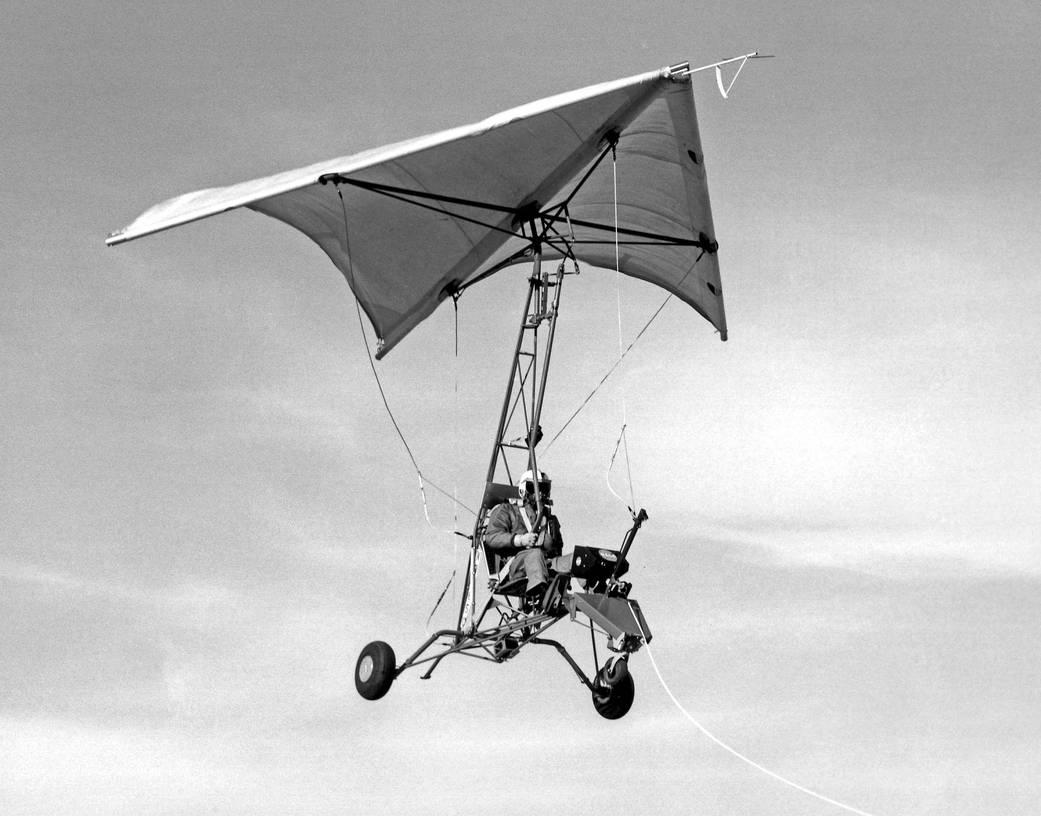The Paresev was unpowered, the “fuselage” an open framework fabricated of welded 4130 steel tubing referred to as a “space frame.” The keel and leading edges of the wings were constructed of 2 1/2-inch diameter aluminum tubing. The leading edge sweep angle was held constant at 50 degrees by a rigid spreader bar. Additional wing structure fabricated of steel tubing ensured structural integrity. Seven weeks after the project was initiated the team rolled out the Paresev 1.
The Paresev (Paraglider Research Vehicle) was an indirect outgrowth of kite-parachute studies by NACA Langley engineer Francis M. Rogallo. In early 1960s the “Rogallo wing” seemed an excellent means of returning a spacecraft to Earth. The delta wing design was patented by Mr. Rogallo. In May 1961, Robert R. Gilruth, director NASA’s Space Task Group, requested studies of an inflatable Rogallo-type “Parawing” for spacecraft. Several companies responded; North American Aviation produced the most acceptable concept and development was contracted to that company. In November 1961 NASA Headquarters launched a paraglider development program, with Langely doing wind tunnel studies and the NASA Flight Research Center supporting the North American test program.
The North American concept was a capsule type vehicle with a stowed “parawing” that could be deployed and controlled from within for a landing more like an airplane instead of a “splash down” in the ocean. The logistics became enormous and the price exorbitant, plus NASA pilots and engineers felt some baseline experience like building a vehicle and flying a Parawing should be accomplished first.
The Paresev was used to gain in-flight experience with four different membranes (wings) and was not used to develop the more complicated inflatable deployment system. The Paresev was designed by Charles Richards, of the Flight Research Center’s Vehicle and System Dynamics Branch, with the rest of the team being: engineers, Richard Klein, Gary Layton, John Orahood, and Joe Wilson; from the Maintenance and Manufacturing Branch: Frank Fedor, LeRoy Barto; Victor Horton as Project Manager, with Gary Layton becoming Project Manager later on in the Program. Mr. Paul Bikle, Director of the Center gave instructions that were short and to the point: build a single-seat Paraglider and “do it quick and cheap.” (Learn more)
Parasev 1-A was transferred to the Smithsonian National Air and Space Museum in Washington, DC in 1968.



























